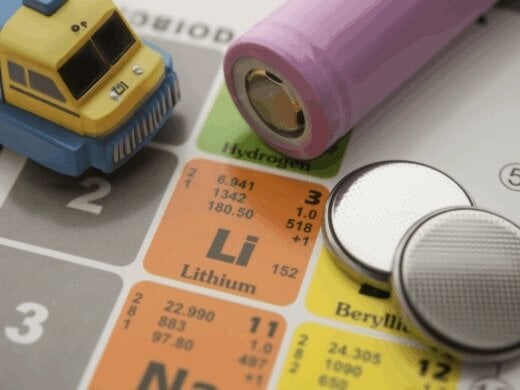Powering Performance: Understanding Battery Reliability in AEI Systems
Why Power Matters in AEI Systems.
www.cometind.com

Automatic Equipment Identification (AEI) systems are the backbone of modern rail logistics, providing the real-time data needed for car tracking, billing accuracy, and regulatory compliance. These mission-critical systems depend on consistent, reliable power to function correctly. Even brief power interruptions can cause missed reads, data loss, and costly operational disruptions. Selecting the right battery technology for AEI systems ensures not only uptime but also the long-term accuracy and dependability of trackside monitoring and communication.
The Role of Batteries in AEI Systems
Within every AEI setup, batteries play a vital role in powering readers, transmitters, and communication links that capture and transmit data from railcars. Depending on the system configuration, batteries may serve as the primary continuous power source or as backup power during outages or maintenance events. In both cases, dependable battery performance guarantees uninterrupted tag reads, consistent communication, and continuous system integrity, which is critical for maintaining efficient and compliant rail operations.
Understanding Power Requirements and System Differences
AEI power needs vary based on several factors, including site size, number of readers, climate conditions, and data transmission frequency. Smaller installations may draw low, steady current levels, while high-traffic sites experience periodic surges during peak activity. Performing precise load calculations ensures that selected batteries meet both capacity and voltage requirements. Correct sizing prevents premature failure, over-discharge, and inefficient charging cycles, all of which can shorten service life and increase maintenance costs.
Battery Chemistries in AEI Applications
AEI system designers and maintenance teams can choose from several battery chemistries, each with distinct advantages:
. Lead Acid Deep Cycle Batteries – The long-standing industry standard for remote backup power. They offer proven durability, stable discharge curves, and affordability, making them ideal for harsh trackside conditions.
. Sodium-Ion Batteries – A newer and more sustainable alternative COMET has adopted to replace traditional lead acid units. Sodium-ion batteries provide comparable power output with longer cycle life, faster recharge rates, and strong performance in both hot and cold climates. Unlike lithium systems, sodium-ion technology uses abundant, non-toxic materials, making it safer and more environmentally responsible without sacrificing reliability.
. Lithium-Ion Batteries – Deliver superior energy density, fast recharge times, and long cycle life but often require thermal management in extreme temperatures.
. Nickel-Based (NiCd/NiMH) – Used less frequently due to limited temperature range and environmental constraints.
Key performance metrics such as discharge rate, internal resistance, and energy density determine how well a battery performs under real-world conditions, particularly in cold-weather and long-duration deployments.

Suitability and Reliability in Trackside Environments
Trackside AEI systems face unpredictable and demanding environmental conditions. Wide temperature swings, vibration, and moisture can all challenge battery performance. Lead acid deep cycle batteries remain preferred for their durability and predictable behavior, while some lithium chemistries require integrated heaters to maintain optimal capacity in freezing climates. Sodium-ion batteries address both performance and environmental concerns by providing strong cold-weather stability, low internal resistance, and zero thermal runaway risk. This makes them particularly effective in remote installations where maintenance access is limited. In contrast, sealed consumer-grade batteries often fail prematurely due to limited cycle life and instability under high load, making them unsuitable for rail use.
Advancements and Innovation in AEI Power Systems
Today’s AEI power systems are becoming smarter and more connected. Integrated monitoring solutions can track voltage, temperature, and discharge rates in real time, providing visibility into system health. Predictive maintenance platforms use analytics to forecast degradation trends and alert operators before failures occur. Meanwhile, advances in battery chemistry, particularly the adoption of sodium-ion technology, promise longer cycle life, improved energy density, and reduced maintenance intervals, all essential for rail operators aiming to optimize uptime and efficiency.
Managing Extreme Conditions and Failure Modes
AEI batteries endure constant environmental stress. Common failure causes include deep discharge, overcharging, corrosion, and temperature extremes. These conditions accelerate degradation and shorten service life. To counter these risks, system designers use protective enclosures, charge controllers, and voltage regulators to stabilize performance. Preventive design choices not only improve reliability but also extend the battery’s operational window in both high-heat and subzero environments.
Maintenance, Testing, and Lifecycle Expectations
The lifespan of AEI batteries typically ranges from three to seven years, depending on chemistry and site conditions. Sodium-ion batteries are showing even longer cycle life potential, often exceeding ten years under controlled load conditions, reducing replacement frequency and total cost of ownership. Routine voltage testing, load verification, and inspection for physical wear help detect early failure indicators. Replacement schedules should rely on real performance data, not arbitrary timelines, to maximize value. Establishing proactive maintenance plans minimizes downtime and keeps trackside units online longer between service visits.

Comparing Battery Options and Supplier Considerations
When choosing AEI power solutions, rail operators should weigh factors such as discharge characteristics, internal resistance, temperature tolerance, and manufacturer support. Selecting proven, industrial-grade batteries from reliable suppliers reduces risk. Low-cost consumer models often lack the durability and serviceability needed for remote or high-demand installations, resulting in higher total lifecycle costs.
The Future of AEI Power: Smarter, Stronger, Longer Lasting
The future of AEI system power lies in connected intelligence and next-generation materials. Expect continuous progress in energy density, cold-weather resilience, and environmental sustainability. Integration with monitoring dashboards will make AEI power management predictive rather than reactive. As technology advances, tomorrow’s AEI batteries will deliver not just power, but smarter performance that drives operational confidence across the rail network.
FAQs
What role do batteries play in AEI systems?
Batteries power the critical components of AEI systems—including readers, transmitters, and communication links—ensuring uninterrupted data capture, transmission, and reliable system performance.
Why is sodium-ion battery technology gaining popularity in rail applications?
Sodium-ion batteries offer longer cycle life, faster charging, and better cold-weather performance than lead acid, while using non-toxic, abundant materials for a safer and more sustainable solution.
How long do AEI batteries typically last?
Most AEI batteries last 3–7 years, depending on chemistry and environment. Sodium-ion models can exceed 10 years under consistent loads and proper maintenance schedules.
What conditions affect AEI battery reliability?
Temperature extremes, deep discharge, corrosion, and vibration can all impact battery life. Using charge controllers, protective enclosures, and preventive maintenance helps extend reliability.
What’s next for AEI power system technology?
Future AEI power systems will use connected monitoring and predictive analytics, enabling smarter maintenance and next-generation materials for higher energy density and improved cold-weather resilience.
www.cometind.com

